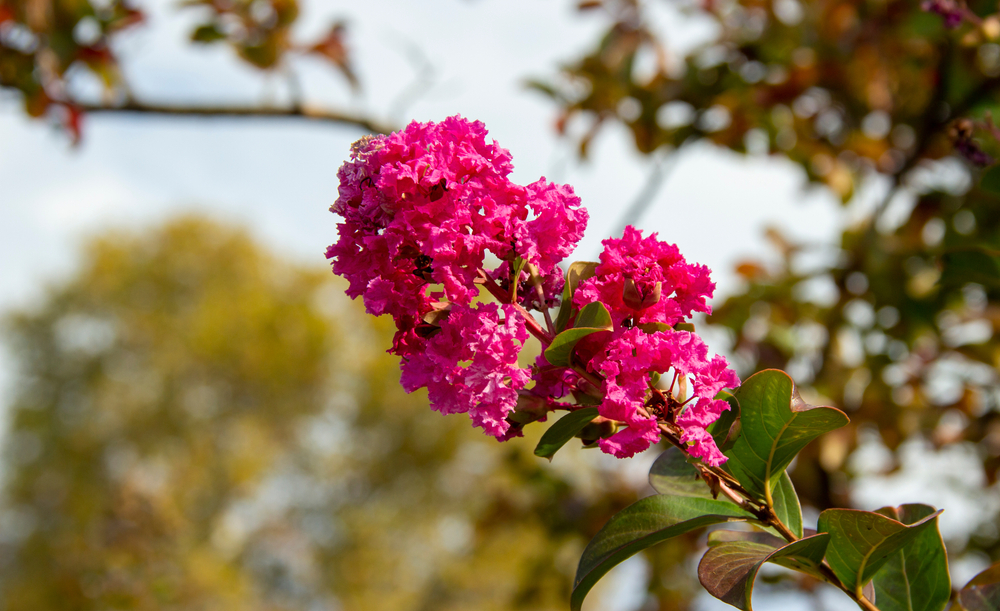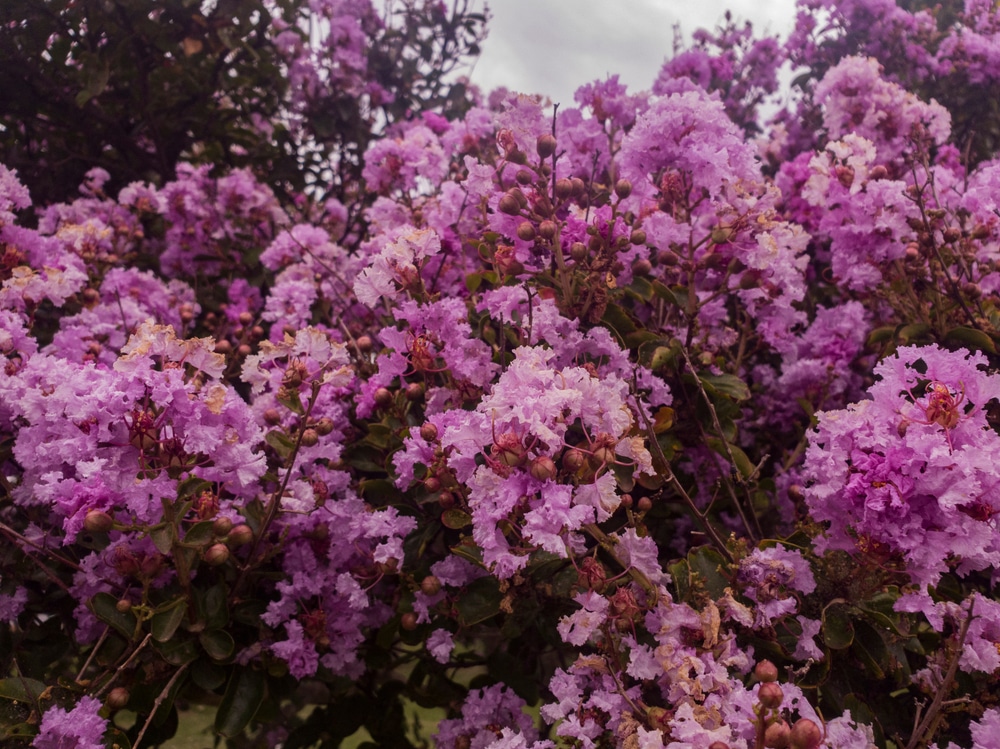Crepe myrtles are stunning plants that you can grow as trees or ornamental shrubs. The main attraction of this plant lies in its gorgeous blooms with a crepe-like texture (hence the name) and usually pink, purple, or white.
Under ideal conditions, a crepe myrtle will bloom in late spring and continue until early fall. But sometimes, your plant might not bloom! However, you don’t have to worry!
Here, we collected everything you must know about your crepe myrtle not blooming and the measures you must take to revert your plant to its natural conditions.
Why is My Crepe Myrtle Not Blooming?

The frustration of having a crepe myrtle and not being able to enjoy its blooms can be high. After all, these plants are hardy and reliable. But when something goes wrong, they might stop blooming. However, if you know what may cause your plant to stop producing flowers, you’ll know what to do to get your flowers back.
Here is a list of reasons that might cause your plant not to bloom. Don’t forget that you should plant your crepe myrtle in a suitable USDA hardiness zone (ideally between 7 and 9). Otherwise, your plant might not produce blooms due to an inadequate climate. With that said, here are more reasons that could halt flower production:
Young Plant
A crepe myrtle must feel established in your garden to start producing blooms. Be aware: it may take between 3 to 5 years for your plant to adjust to new growing conditions.
So, if you bought a young plant, be patient! After all, if you do things right, you’ll be able to enjoy your myrtle for as many as 50 years! So, you should be able to endure a couple of years without flowers.
Alternatively, consider getting a more mature tree from the nursery. This way, you won’t have to wait too long before getting gorgeous blooms.
Lack Of Sunlight
Crepe myrtles are native to South East Asia and Oceania. As you may expect, these plants need plenty of sunlight to thrive and produce their gorgeous blooms.
If you fail to provide them with at least six hours of direct sun every day, you will probably have problems with blooming. Consider placing your crepe myrtle far from trees or houses that might cast shade on your plant.
Late Pruning
While crepe myrtles do not need much attention, you’ll have to prune them yearly. Doing so will help you keep them in a healthy shape. However, pruning them too late might prevent the buds on your plants from developing.
Instead, prune your crepe myrtle in February (before displaying new growth). Keep in mind that things might change according to your local climate! Don’t forget to check the best time to prune your crepe myrtle in your USDA hardiness zone to avoid making mistakes.
Ensure you remove dead or unhealthy-looking branches to allow better airflow and increase the lighting of your tree.
Too Little Water
Another reason your crepe myrtle might not produce flowers is the lack of water. Even if these plants can be drought-tolerant when they establish, they will need plenty of moisture during their growth phase. Also, too little water might stress them and prevent them from producing blooms.
Signs that might help you identify this issue include yellowing, wilting, and dry soil. While you should never overwater your plants (as it may cause fungal infections and attract the spread of pests), you should water your plant deeply and allow moisture to reach 12 to 24 inches deep into the soil. But, feel the substrate with your fingers before adding extra water.
Lack of Nutrients
Your crepe myrtle needs enough nutrients to produce abundant blooms. If your plant stops flowering (and it is not too young, too old, or in need of pruning), you should check its soil. Consider carrying out a test to ensure it contains adequate phosphorus and nitrogen.
Overfertilization can cause severe problems to your plants! If you are using a chemical product, ensure you follow the instructions you find on its label.
Also, get slow-release fertilizers to avoid adding too many nutrients at once. Choose one higher in phosphorous than nitrogen to prevent your plant from becoming leafy but without blooms. If you prefer more organic solutions, you can add bone meal around your plant to increase the amount of phosphorous in the soil.
Diseases or Pests Attacks
Of course, your plant might stop producing blooms when diseases or pests attack it. Keep an eye on insects around your crepe myrtle and take suitable measures to remove them (and avoid infestations). Also, spray a fungicide if necessary and follow a regular watering schedule to avoid making your plant too attractive to undesired infections.
